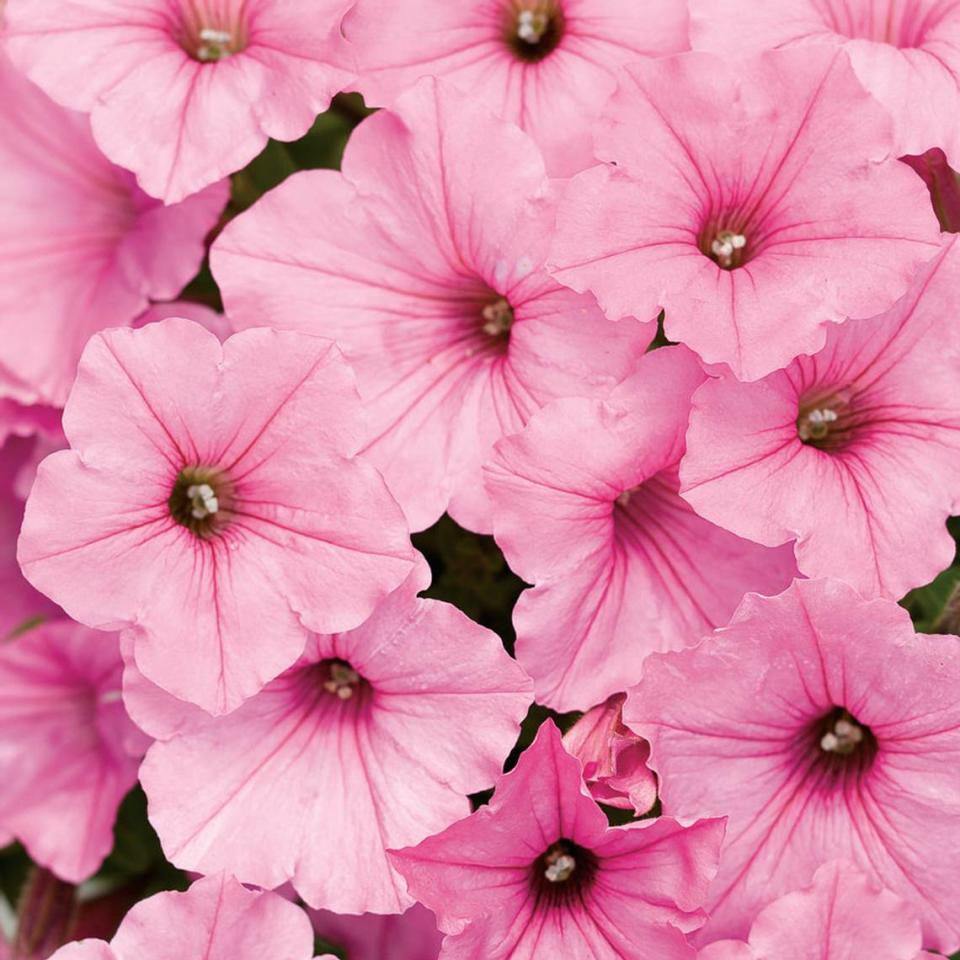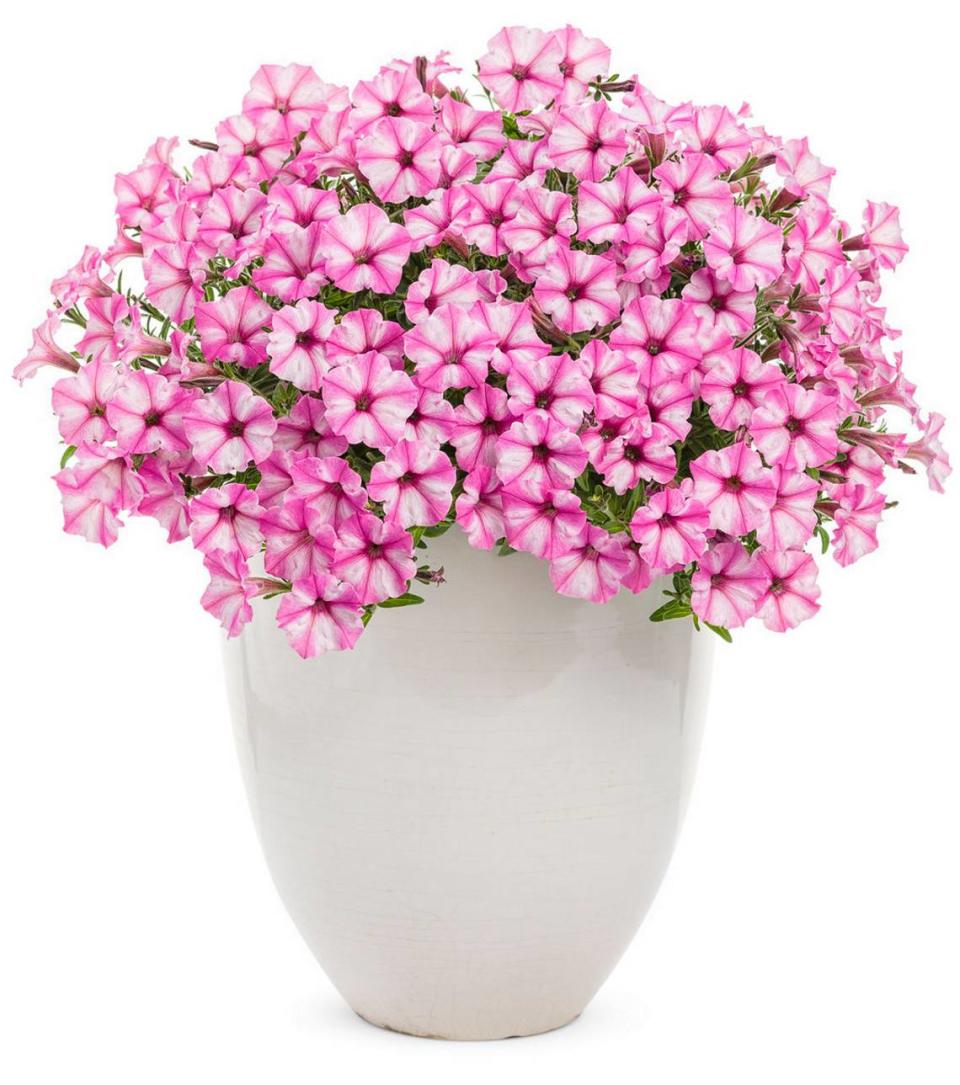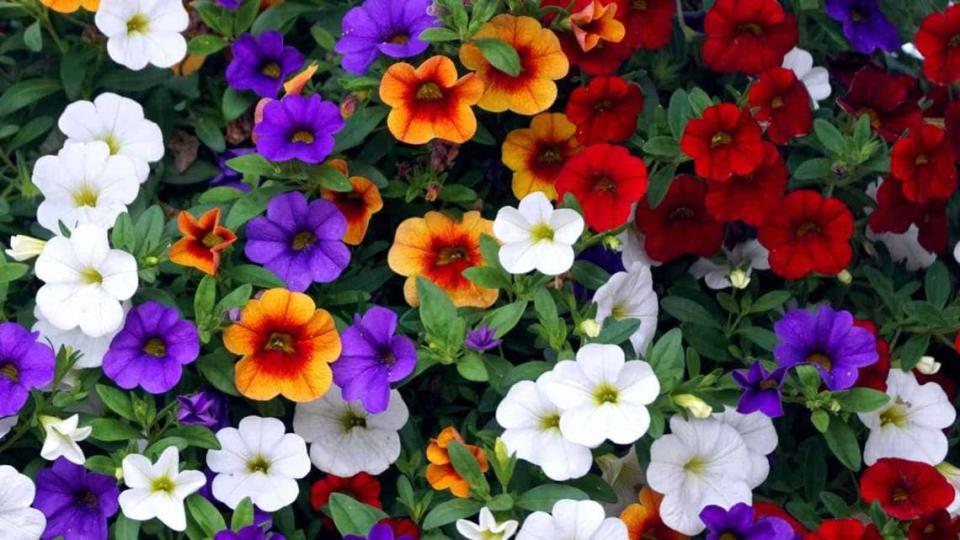Tips for perfecting your petunia knowledge for a flower-filled summer in Western Washington
The last week of May is time to add summer color to your landscape, perfect your petunia knowledge and have a flower-filled summer that blooms into fall.
Petunias need at least six hours of sun a day and they love fertilizer. The big news here is that the new petunia varieties are more weather resistant with more vigor than those you tried to grow in the past. The two names to look for if you want to cover a lot of ground with flowers that will thrive in the usually cool, wet June weather of Western Washington are the Wave Petunias and the Supertunias.
Wave Petunias can grow 2 inches a day
Great for covering big beds as one plant can spread to 5 feet wide. That would be the fast growing Tidal Wave petunia that comes in a variety of colors. For a more compact but still rain-resistant plant, look for the Easy Wave Petunia bred for cool climates that stays 2 to 3 feet wide.
There is also a ShockWave petunia with smaller flowers that is more full and mounding so perfect for window boxes and large containers such as half whiskey barrels. Wave petunias are often sold in bright pink plastic pots at the nursery or garden center.
Supertunias come from the Proven Winners brand
This brand of easy-to-grow petunias are from the people at Proven Winners, so look for plants in white plastic pots with the Proven Winners name. They cost more but you get what you pay for with petunias.
Vista Bubble Gum Pink is the variety that has made the biggest explosion in popularity and it often sells out in nurseries as demand for this vibrant and easy-to-grow petunia increases each year. It is fast growing and very vigorous as long as you remember to fertilize it. Use it in beds where it can be planted 4 feet apart. A single plant from a 4-inch pot will bloom into a weed-blocking mass of color 4 feet by 4 feet.
Standard Supertunias are shorter and more compact than the Visa series but they often have larger flowers with thicker, more weather-resistant petals. Supertunia Giant Pink makes a big show in containers and can be cut back by one third mid summer if the spread of the trailing flowers become a bit much. These petunias do not need to be deadheaded or have the faded flowers removed.
New varieties with many bi-colors mean the standard Supertunias add lots of novelty to the garden. The compact form of the variety Sweet Stars Supertunias makes them the perfect plant for tidy pots and neat hanging baskets.
Confetti of color with Mini Vista Petunias
In a demo hanging basket that was compact, tidy and full of bi-colored blooms, I saw just four Sweet Star petunias grown in one 14-inch container. Mini Vista Pink Star has pink petals with a white star, Mini Vista Violet Star is purple and white, and the variety called Sangria is a deep wine with white contrast. Mixing colors in a hanging basket or container garden is fun, but using the bi-colored petunias keeps the mature size of all the plants used in an orderly and uniform composition.
Grow Million Bells or Calibrachoa in containers only
These blooming beauties look like mini petunias but Million Bells are actually one of the many types of Calibrachoas that are considered tender perennials. This means they will not survive the winter but will survive cool nights above 40 degrees. These are much smaller plants often called mini petunias.
The secret to growing Million Bells is to keep them in pots or hanging baskets. Our wet weather will rot the stems of these compact plants if they are planted in the ground. Even when grown in containers, take care not to over water. Just like petunias, Million Bells prefer full sun and plenty of fertilizer but they will adapt to half day of sun. Look for new varieties such as Ombre Pink and the dark magenta with purple blooms of Cabaret. For an instant sunny look, the variety called Lemon Slice has bright yellow blooms with pure white stripes.
Tip: Because these members of the Calibrachoa family love warm soil and good drainage, Million Bells do especially well in clay pots or sunny window boxes that have excellent drainage. Clay or terra cotta pots breathe and allow the sun’s warmth to hit the root system. Plastic or foam containers tend to hold moisture and insulate the soil from heat. Million Bells will also adapt to shallow containers with just 8 inches of soil.
Marianne Binetti has a degree in horticulture from Washington State University and is the author of several books. Reach her at binettigarden.com.





